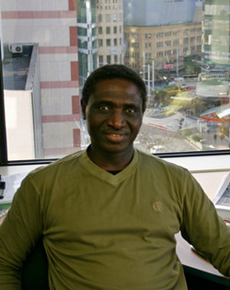Tension in the inner city

Our Auckland inner city residents love and respect the area they live in, and wish visitors to their ‘space’ did too.
These findings and much more in the Parnell Trust and AUT University ‘Connectedness in Auckland’s Inner City’ Study.
The Parnell Trust and other agencies issued a challenge in 2010, to understand how the diverse communities in the inner city engage with each other and the service providers; their knowledge and use of community services within the inner city of Auckland, and how to provide effective services that address the needs of the diverse communities.
AUT University’s Centre for Community Investment and Development in the Institute of Public Policy conducted the research and surveyed over 410 respondents.
Lead researcher Dr Love Chile says the basis of the research stemmed from Parnell Trust wanting to understand what services inner city residents wanted and needed.
“Parnell Trust has provided social services to the inner city for quite a long time but they wanted a scientific and evidence base to inform their work,” he says.
Lack of awareness of community social services
The greater majority of research respondents did not know the range of community social services available within the inner city. Ninety-four per cent of respondents did not know where to go to receive victim support, and 84.5 per cent did not know where to get counselling support.
“The small number who knew about the services used them, but there was a large number that didn’t know any of these services existed,” says Dr Chile.
“There seems to be a lack of information about services in the inner city.
People knew where the police station and hospital were, but very few knew about the other services available to residents such as budget advice or free language classes.”
Interestingly, only 24.2 per cent of respondents reported they felt part of the community and 10 per cent of respondents felt isolated.
However the report has shown residents really identified with the inner city.
“It is a place they wanted to live in and the overwhelming majority live in the area by choice.”
Inner city friendlier than the suburbs
Many participants reported they found the inner city friendlier than the suburbs because of the larger mix of ethnicities.
However, there is some reported tension between people who live in the inner city and visitors because of the perception by residents that visitors don’t respect the inner city.
“They think visitors see it as a place to go to rather than a place that they own,” says Dr Chile.
Anne Barrowclough from the Parnell Trust says the trust had recognised the changing demographics of the wider community, as well as the increasing density of housing in the inner city addressing the growing desire for inner city living.
“We believed that these ‘new populations’ needed to be able to engage with their communities and access services that enhanced their individual and collective wellbeing.
“We envisaged the findings would provide knowledge to enable Parnell Trust to create and deliver classes and activities to better match the needs of this community.”
The report will be launched on Monday 18 June at the Jubilee Building, 545 Parnell Road, Parnell at 5pm.